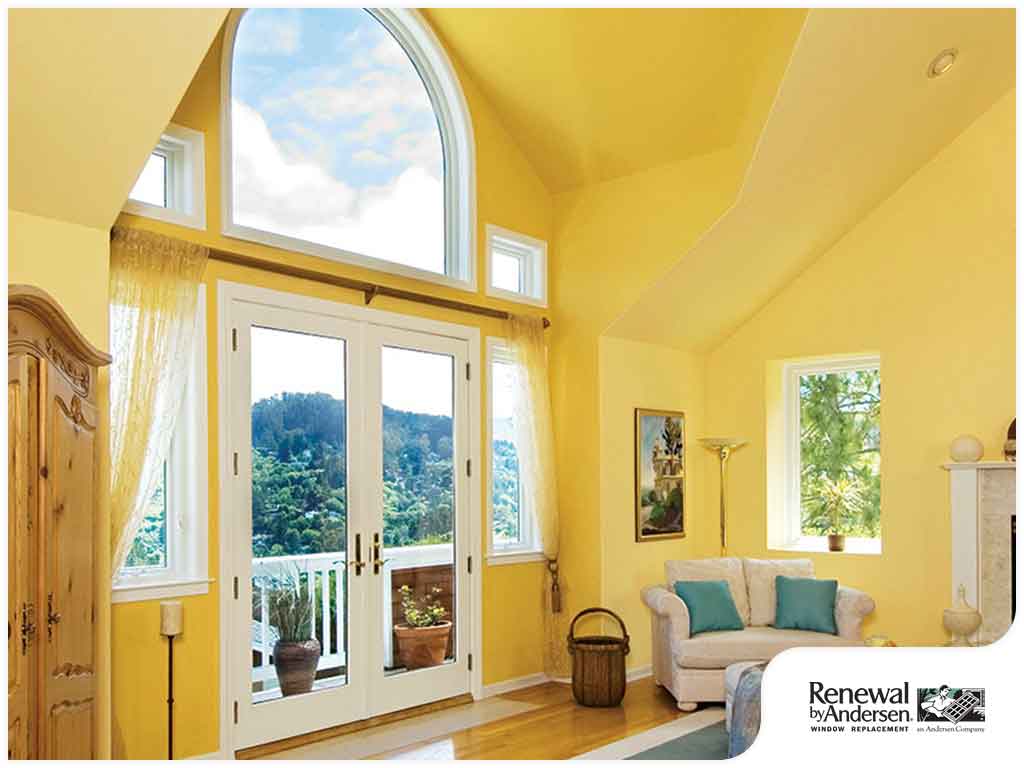

Air can escape and enter through different parts of your home. Sometimes drafts occur even in newly installed casement windows, depending on the quality of their installation.
In this article, Renewal by Andersen® of Knoxville discusses air leakage and how it is measured. We also share a few tips on how you can detect and fix this kind of issue.
Air Leaks
Air leakage is sometimes referred to as air infiltration. It is the measurement of air that passes through a window. Typically, window installers get this number prior to installation and ensure that air leakage stays at this level.
Furthermore, air leakage measures on a scale of 0.1 to 0.3, with 0.1 denoting the least amount of air that passes through a window. This rating, along with other specifications, like U-factor and visible transmittance, is usually given by the National Fenestration Ratings Council (NFRC). If you’re shopping for new double-hung windows or custom windows, look for these in the labels. Windows with 0.1 to 0.3 air leakage ratings are generally considered energy-efficient, so you might want to stay within this range.
Air Leakage Ratings
To calculate for air infiltration, the amount of air that passes through a window in one minute is noted in cubic feet. Then, this is divided by the total area of the window.
When comparing replacement windows and their air leakage rating, it’s best to compare those that are of the same size. Keep in mind that air leakage is calculated in terms of the overall window size, so comparing differently sized windows can be misleading.
Here are a couple more things that you should keep in mind: 1) air leakage rating is based on a constant wind speed of 25mph, and 2) air leakage ratings that are less than 0.1 are not recognized by the NFRC.
Checking and Fixing Air Leaks
To determine if there are air leaks in your home, you can try this simple test:
Close your windows and doors.
Light an incense stick and place it near the window and door frames where drafts could potentially sneak in.
Observe the movement of the smoke, and note the areas that need sealant, caulk and weatherstripping.
You can also opt to call a window company to carry out an inspection. This way, you can be assured of accurate findings and solutions.
Here are a few tips on repairing air leaks:
Windows
– Bronze weatherstripping may be time-consuming to install, but you can expect it to last for decades.
– Adhesive-backed EPDM rubber requires a simpler installation procedure, and it can last for an average of 10 years.
– Pulley seals may also be helpful as they can block air from penetrating through holes where cords usually disappear into the frames.
Doors
– If drafts are coming through your doors and your window contractor recommended to replace the weatherstripping, a foam-type tape is a good option to consider. It has adhesive backing, and it’s easy to install. If it becomes loose, you can simply reinforce it with staples.
– Another option is felt, which comes with either adhesive backing or flexible metal reinforcement. It’s affordable and easy to install, but durability is not its strongest suit.
– If the door bottoms are causing draft problems, this may be due to worn threshold gaskets. Replace these gaskets.
Always check with an expert to guarantee effective and long-lasting solutions to air leaks. Also, check your windows and doors from time to time. This way, you can get ahead of any problems that may be existing.
If you’re planning a window replacement project, Renewal by Andersen of Knoxville can help you. We have a team of trained and experienced professionals, so you can rest assured that your project will be done to a high standard. Call us at (866) 609-5033 or fill out our contact form to request a free consultation. We serve homeowners in Knoxville, Tennessee, and nearby areas.